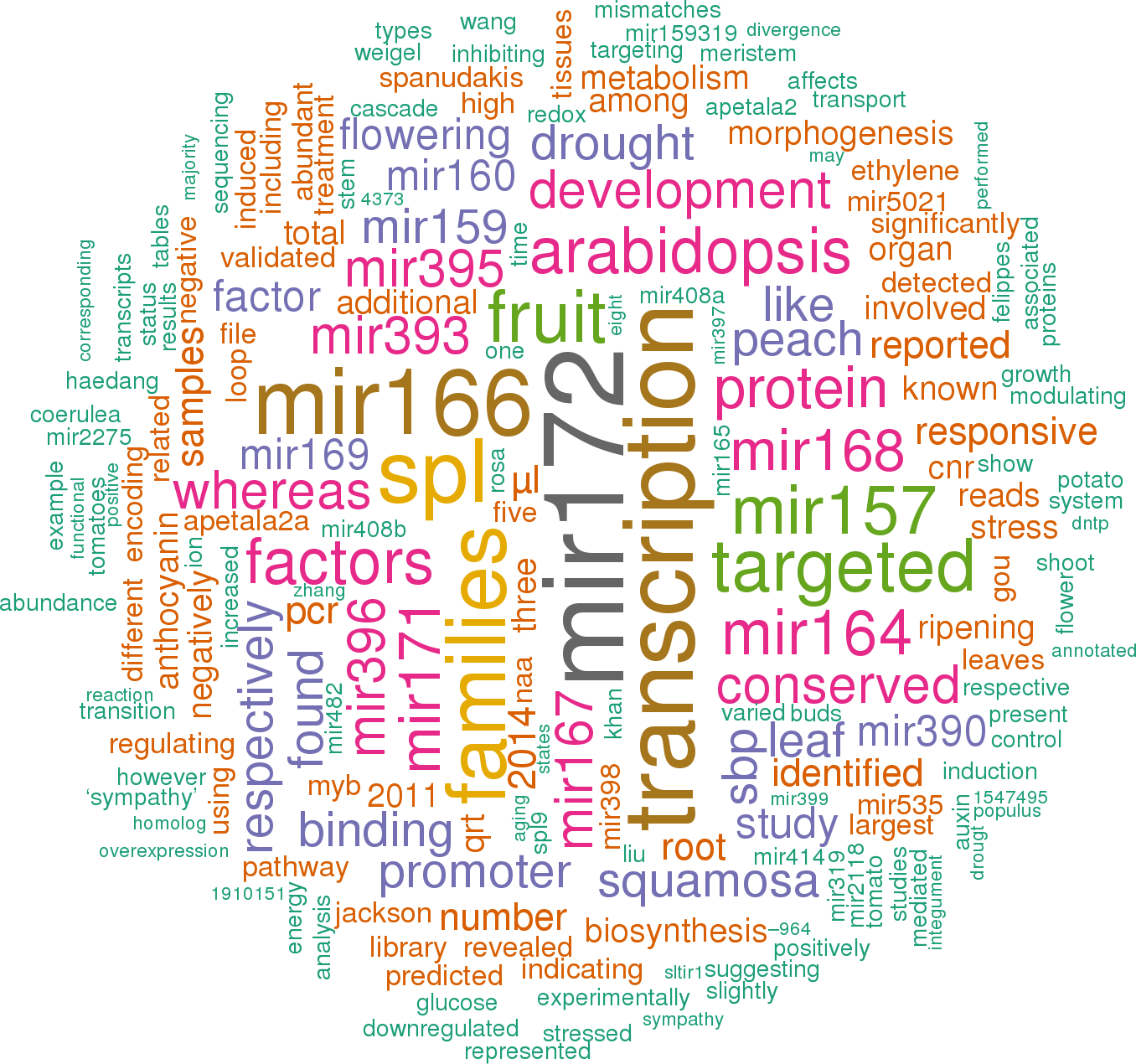14 papers mentioning ppe-MIR156d
Open access articles that are associated with the species Prunus persica
and mention the gene name MIR156d.
Click the buttons to view sentences that include the gene name, or the word cloud on the right for a summary.

 |
 |
 |
 |
 |
 |
 |
 |
 |
 |
 |
 |
 |
 |
